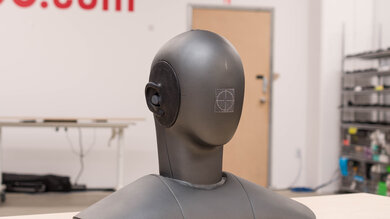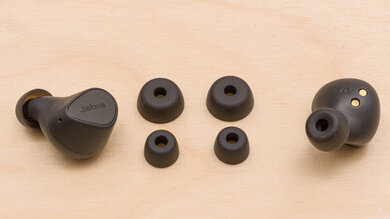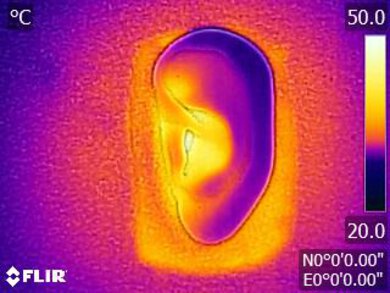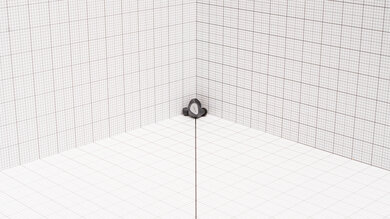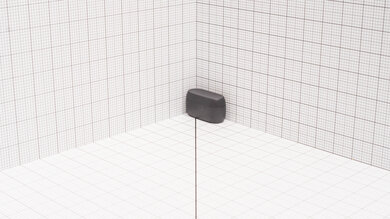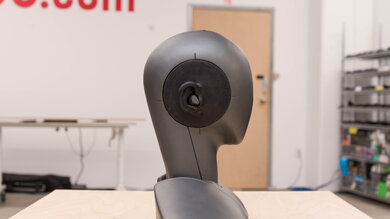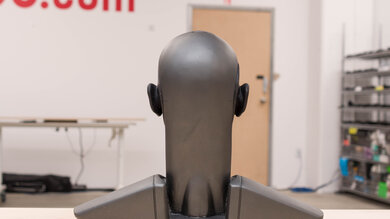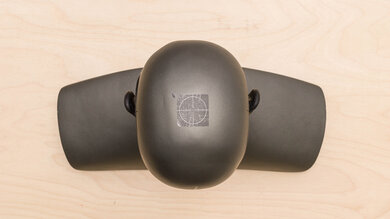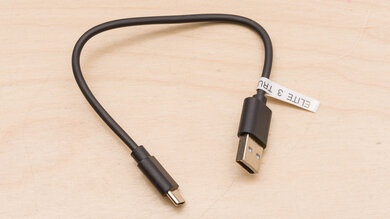The Jabra Elite 3 True Wireless are affordable wireless in-ears with a simple design. Compared to other earbuds in the same line-up, like the Jabra Elite 4 True Wireless and Jabra Elite 5 True Wireless, they don't support multi-device pairing or have active noise cancelling (ANC). Sporty variants like the Jabra Elite 4 Active True Wireless also offer a higher IP57 rating for dust and water resistance. Still, if you're on a tight budget, they offer a comfortable fit, a solid battery performance, and an app with sound customization features.
Our Verdict
The Jabra Elite 3 are decent for neutral sound. Out of the box, they have a slightly bass-rich sound profile that adds a touch of extra body and boom to your mixes. It won't overwhelm vocals and lead instruments, making their sound suitable for various audio content. Their companion app also offers a few graphic EQs and presets if you prefer a different sound. However, their passive soundstage is closed-off, and sound feels like it's coming from inside your head rather than from speakers placed around you.
- Well-built and comfortable design.
- Bad passive soundstage.
The Jabra Elite 3 are very good for commute and travel. They have a comfortable fit for most people, a sturdy design, and last around seven hours of continuous use. However, they don't have an ANC feature and won't block out rumbling bus and plane engines. They can help passively reduce noise like background conversations.
- Well-built and comfortable design.
- Good battery performance.
- Struggle to block out bass-range noise.
The Jabra Elite 3 are great for sports and fitness. Thanks to their wireless in-ear design, you can easily take them to the gym or park for workouts. They also have a lightweight, stable design and feel sturdy. They're rated IP55 for dust and water resistance and have robust physical controls, which are handy when you're on the move.
- Well-built and comfortable design.
- Stable and breathable fit.
- Certified IP55 for dust and water resistance.
- Bad passive soundstage.
The Jabra Elite 3 are decent for office use. They have a comfortable, well-built design and don't leak very much audio, so if you like to crank up the volume, you can listen to your favorite tracks without disturbing people around you. They have over seven hours of continuous battery life, and their carrying case holds roughly three additional charges. Their passive design can also help block out office chatter.
- Well-built and comfortable design.
- Good battery performance.
- Decent recording quality.
- Bad passive soundstage.
- No multi-device pairing.
The Jabra Elite 3 are Bluetooth earbuds unsuitable for wireless gaming. They aren't compatible with PlayStation or Xbox consoles. They work with Bluetooth-enabled PCs, but their latency is likely too high for gaming.
The Jabra Elite 3 are wireless-only headphones, and you can't use them wired.
The Jabra Elite 3 are fair for phone calls. These in-ears have an integrated mic with decent recording quality, so you sound clear and intelligible, although your voice lacks a bit of body. However, the mic also struggles to separate your voice from ambient noise around you, and speech could be drowned out by sounds in your surroundings, like a busy street. That said, the earbuds can block out a decent amount of ambient noise around you, allowing you to hear your call better.
- Well-built and comfortable design.
- Disappointing noise handling.
Changelog
- Updated Jun 23, 2023: Made minor edits to the text and checked that it's up to date.
- Updated May 11, 2023: We've added a comparison between these headphones and the Jabra Elite 4 True Wireless in Noise Isolation.
- Updated Dec 01, 2022: We've added a comparison to the Jabra Elite 5 True Wireless in the Style box.
- Updated Mar 15, 2022: Retested 'Equalizer' with firmware version 1.3.0. The result changed from 'Presets' to 'Graphic + Presets'.
Check Price
Differences Between Sizes And Variants
The Jabra Elite 3 come in four color variants: 'Lilac', 'Dark Grey', 'Gold Beige', and 'Navy'. We tested the 'Dark Grey' variant, but expect our results to be also valid for the other colors. You can see the label for the unit we tested here. If you encounter another variant, please let us know in the forums, and we'll update our review.
Popular Headphones Comparisons
The Jabra Elite 3 are less expensive earbuds from Jabra. Unlike some pricier options, including later releases in the same line-up like the Jabra Elite 4 True Wireless and Jabra Elite 5 True Wireless, they don't have an ANC system or support multi-device pairing. However, they have a comfortable, stable fit, a well-balanced and customizable sound profile, and a decent battery life, offering good and versatile performance for simple earbuds.
Check out our recommendations for the best earbuds and in-ear headphones, the best wireless Bluetooth earbuds, and the best wireless Bluetooth earbuds under $100.
The Jabra Elite 75t Truly Wireless and the Jabra Elite 3 True Wireless are similarly performing headphones. While both headphones are equally comfortable, the Elite 75t are better built and active noise cancelling so they can block out more ambient noise around you. They also support multi-device pairing. The Elite 3 have a more neutral default sound profile, which some users may prefer, and they have a better battery performance.
The Jabra Elite 4 True Wireless are the next in line of the Jabra Elite 3 True Wireless. While both buds are well-built and have neutral sound profiles, the Elite 4 support multi-device pairing and have an ANC system. Even though it doesn't offer a significant improvement over the buds' passive noise isolation capabilities. However, we noticed distortion issues with our Elite 4 model, which affects the overall clarity of their sound.
The Jabra Elite 3 True Wireless and the Jabra Elite Active 75t Truly Wireless are similarly performing in-ears, though they have a few differences. The Elite Active are better built and support multi-device pairing. However, the Elite 3 have a better battery performance, support aptX codec, and have a more neutral default sound profile, which some users may prefer.
The Jabra Elite 7 Pro True Wireless are better for most purposes than the Jabra Elite 3 True Wireless. The 7 Pro have a longer continuous battery life and an ANC feature. Their mic also has a significantly better recording quality.
Test Results

These earbuds have an almost identical design to the Jabra Elite 5 True Wireless, with a teardrop shape and a modest manufacturer's logo on each earbud. They look quite subtle in your ears but do stick out a bit. These buds come in four different color variants to better suit your style: 'Lilac', 'Dark Grey', 'Light Beige', and 'Navy'.
These earbuds are comfortable. They're lightweight and have the same circular ear tips as the Jabra Elite 75t Truly Wireless. However, the buds stick out of your ears and cause a plunger-like feeling, which can become uncomfortable over time.
These in-ears have good controls. There's a button on each earbud that's clicky and responsive. There are audible tones when you power the headphones on and off as well as when you enter pairing mode. It's not intuitive to know where each control is located. Unlike the Jabra Elite 85t Truly Wireless, there's also no voice prompts to let you know which controls you've registered.
On the left earbud:
- One press: Turns HearThrough on or off. This feature lets you hear your surroundings without pausing your audio.
- Double-press: Accesses voice assistant. If you have an Android device, you can also remap this control to launch Spotify so that you can play your favorite tracks.
- Press and hold: Lowers volume.
On the right earbud:
- One press: Plays or pauses audio.
- Double-press: Skips to the next track.
- Triple-press: Skips to the previous track or restarts tracks.
- Press and hold: Raises volume.
On either earbud:
- One press: Answers a call as well as mutes and unmutes the mic when you're in a call.
- Double-press: Ends and rejects calls.
They have a slightly bass-rich sound profile. They have a bit of extra body and boom in the bass range that doesn't overwhelm instruments and vocals. It's quite a versatile sound profile, but if you prefer a different sound, their companion app offers a graphic EQ and presets to help you adjust their sound.
They have excellent frequency response consistency. Although there's some deviation in treble delivery present, as long as you form an airtight seal, you'll get consistent bass and treble delivery each time you use them.
They have excellent bass accuracy. The whole range is slightly overemphasized, so the bassline in songs like Seven Nation Army by the White Stripes sounds punchy and full without being overly boomy or overwhelming.
The mid accuracy is excellent. The range is fairly flat and neutral, resulting in accurate vocals and lead instruments—however, a dip in the mid-mid nudges vocals and lead instruments to the back of your mix.
The Jabra Elite 3 have great treble accuracy. The low-treble is slightly underemphasized, veiling vocals and lead instruments. The mid-treble is a bit underemphasized too, which dulls sibilants like cymbals.
The Jabra Elite 3's peaks and dips performance is great. A long peak in the bass range adds a bit of thump, rumble, and boom to mixes, while a dip in the mid-mid nudges vocals and lead instruments to the back of your mix. An uneven mid-treble makes sibilants like cymbals alternatingly dull and piercing.
The imaging performance is excellent. In general, Jabra's 'Elite' earbuds have good imaging, indicating good quality control and ergonomics. Keep in mind that imaging varies between units, though. For our unit, the weighted group delay falls below the audibility threshold, resulting in tight bass and transparent treble reproduction. The L/R drivers are also well-matched in phase, amplitude, and frequency response, which is important for accurately locating and placing objects, like footsteps and voices, in the stereo image. There's a small peak in the phase response's mid-range, but it won't be an issue for most users.
These buds have a bad passive soundstage, which is to be expected from in-ear headphones. By design, they bypass the outer ear, which needs to be activated by sound resonances to create a more speaker-like soundstage. As a result, sound is perceived as coming from inside your head rather than from speakers placed in the room around you. They also don't sound as open or spacious as headphones with an open-back design.
The Jabra Elite 3's weighted harmonic distortion performance is good. All frequencies fall within good limits, resulting in clean and pure audio reproduction.
These are the settings used to test these headphones. Our results are only valid when used in this configuration.
They have decent noise isolation performance. Unlike the Jabra Elite 4 True Wireless, they don't have active noise cancelling (ANC), and as a result, struggle to block out the low rumble of bus and plane engines. They do a better job of cutting down mid-range noise like ambient chatter and higher-pitched sounds like the hum of an AC unit, though.
These in-ears have a fantastic leakage performance. They don't leak much sound, so you can listen to audio at high volumes without disturbing others around you.
The integrated mic has a decent recording quality. Your voice is understandable but lacking in body.
The integrated mic's noise handling performance is disappointing. It struggles to separate your voice from ambient noise around you, so if you're taking a call from a busy street, your voice can be drowned out.
Their battery performance is decent. They last just over seven hours of continuous use and come with a case with three additional charges. The buds switch off automatically after 15 minutes without a connection or 30 minutes of no activity. You can use one bud while the other charges in the case. Jabra advertises a 10-minute fast charge for one hour of playback, which is helpful when you need power quickly. However, keep in mind that battery life varies with real-life use.
The Jabra Sound+ app is good. It's compatible with iOS and Android devices and includes a graphic EQ and presets for sound customization. You can also turn HearThrough on or off, check the buds' battery life, and update the headphones. You can turn on or off the mic's sidetone to improve your call experience. However, while you can remap the voice assistant control to open Spotify to play tracks, this feature is only available on Android devices.
The Jabra Elite 3 have decent Bluetooth connectivity. Unlike the Jabra Elite 4 True Wireless, they don't support multi-device pairing, so you can't connect them to multiple devices simultaneously. They also lack NFC pairing and have high latency using SBC and aptX codecs on PCs, so you might notice audio syncing issues when streaming video. They don't support AAC codec either. On the upside, their iOS and Android latency is low, so you won't notice delays between your audio and visuals. However, some apps and devices compensate for latency differently, so your real-world experience may vary.
These headphones can connect to Bluetooth-enabled PCs with full mic and audio compatibility. However, you can't connect them to your PC in any other way.

